This is part two in my Schiit review of the products I received a while ago, hence the Schiit Audio Gungnir 2 Balanced Multiform™ DAC has been my reference DAC for the last month or so, which in itself is probably a bit telling. The previous review in this series is my review of the Schiit Audio Skoll F Balanced Discrete Class A Zero Feedback Remote Control Phono Preamp, which, for obvious reasons, only touched upon the Gungnir 2 but did not involve it. Since I have written two show reports and performed four reviews in the meantime, this review has been a long time waiting, but such is the life of a busy reviewer.
The Schiit Audio Gungnir 2 Balanced Multiform™ DAC
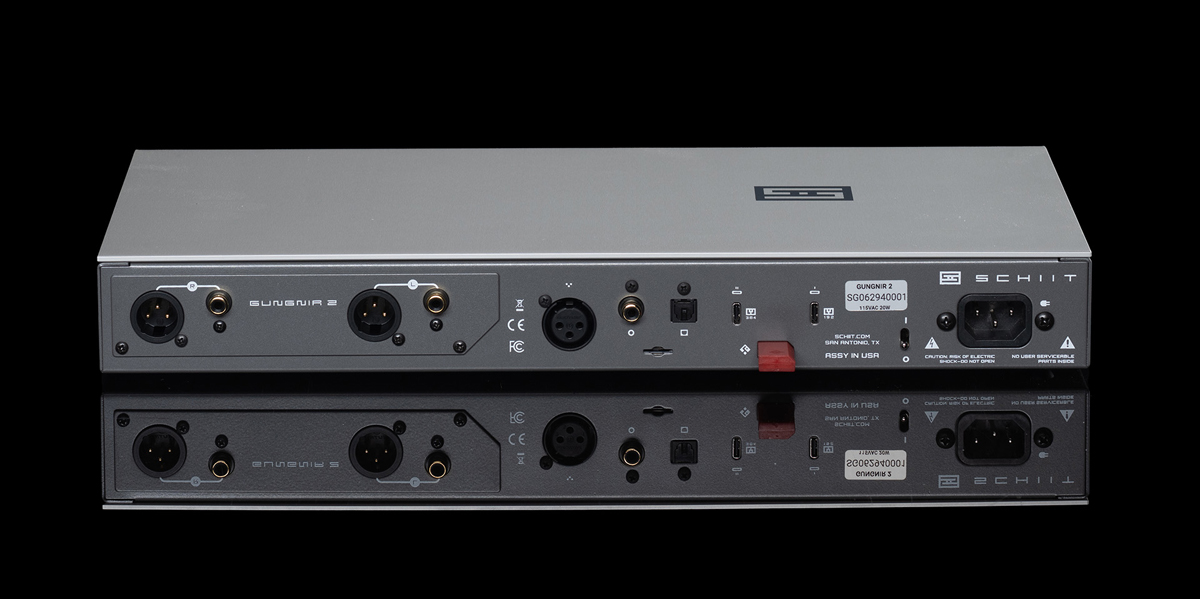
The Schiit Audio Gungnir 2 Balanced Multiform™ DAC is what you get when you put one of the top digital engineers in high-end audio (Mike Moffat) and a brilliant analog amplifier designer (Jason Stoddard) together to design an audiophile DAC.
Gungnir 2 extends Schiit Audio’s multibit approach with an all-new, balanced multiplying analog stage, coupled to four medical/defense grade DAC8812C D/A converters with their own proprietary time- and frequency-domain optimized digital filter implemented on an Analog Devices DSP. It also offers a true non-oversampling mode (NOS), bypassing their digital filter entirely.
A Unison 384 USB Type C input, which accepts bit depths and sample rates of up to 32 bits/384kHz, for native DXD playback capability, is accompanied by a second standard Unison 192 USB Type C input allowing for the connection of two separate input devices. (Note: Unison USB is Schiit Audio’s proprietary USB input based on a general-purpose PIC32 microprocessor, using precision local clocks and complete electromagnetic and electrostatic isolation, and is UAC2-compliant, replacing the off-the-shelf USB previously employed in older pieces, which was rife with issues.)
“Modular Autonomy 2” is offered for the Gungnir 2, a slide-in analog card, completely modular input and processing cards, and over-the-air or SDCard firmware updates, making the Gungnir 2 basically future-proof without ever having to go back for upgrades.
While equipped with a full-function remote control, the Gungnir 2 also offers their Forkbeard™: System-Wide Control for system-wide control, visibility, OTA updates, and more. Forkbeard is a plug-in module in the back of the Gungnir 2, which works in conjunction with a downloadable app (iOS only for now), which allows greater visibility and control, along with over-the-air firmware-update updates. (Note: Gungnir’s free June 2025 OTA update will also bring complete digital preamp functionality to Gungnir 2, including a 5-band parametric EQ.)
As with the rest of Schiit Audio products, the Gungnir 2 is Designed and Built in the USA
To quote Schiit Audio, “By “designed and built in the USA” this is what we mean: we design our products in based in Texas and California, and we make our products right here, too. The vast majority of the production cost of Gungnir 2—chassis, boards, transformers, etc—goes to US companies manufacturing in the US. And it all comes together in our San Antonio, Texas facility.”
Living with the Schiit Audio Gungnir 2 Balanced Multiform™ DAC
Obviously the Schiit Audio Gungnir 2 Balanced Multiform™ DAC had plenty of burn in time given I had been using it for over a month as my reference DAC, so for this review I started with my reference system: LSA VT-70 Tube Integrated Amp, Audio-gd R2R-1 DAC, Black Dragon Cables, Core Power Technologies A/V Equi=Core 1000, Vera-Fi Audio VBH-1 (Vibration Black Hole) isolation feet, XSA-Labs Vanguard Loudspeakers, two Veri-Fi Audio LLC Vanguard Caldera 10 Active Subwoofers. The big question was which headphones to choose, I knew I wanted to choose an extreme resolution headphone as well as something that was totally unforgiving, this left me with two choices: the HIFIMAN Mini Shangri-La or the HIFIMAN SUSVARA UNVEILED. I settled on the SUSVARA with the Danacable Lazuli™ Rhapsody Headphone Cable, as this is my top rig at the moment.
I will say that using the Forkbeard App was much easier than the remote control for setting things up, as you have visual feedback as to what you are doing. Also, one feature that the Gungnir 2 offers that I feel is a must have is the Phase Reversal switch, note this is absolute phase not channel phase, essentially digital recordings are either in phase or out of phase and if the recording is out of phase it will cause your soundstage to collapse as it will be as if the musicians are behind you instead of in front of you.
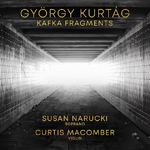
Queuing up Qobuz, I selected “György Kurtág: Kafka Fragments, Op. 24” (24-bit/96kHz-Qobuz) as performed by Susan Narucki and Curtis Macomber, the sound of the solo violin and operatic vocal was simply astonishing, massively dynamic in a vast, silent soundstage. All the nuance of the violin’s timbre and the occasional stridency that accompanies an operatic voice in an empty hall came through clearly with exceptional musicality.
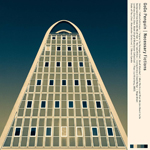
Next up was GoGo Penguin and “Necessary Fictions” (24-bit/48kHz-Qobuz), and the sense of space was epic, the timbre of the upright bass had unbelievable texture and tonality laying the resonance and overtones of the wood bare. The piano had that signature ring to the high notes that seldom is communicated realistically, and again, the musicality of the midrange was beyond belief without any feel of coloration, offering an incredibly neutral tonal balance.
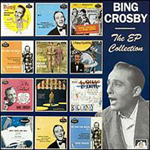
Since the real hurdle for a DAC of this caliber is 16-bit/44.1kHz, I selected Bing Crosby singing “Too-Ra-Loo-Ra – Loo-Ral (That’s An Irish Lullaby) (1945 Single Version)” (16-bit/44.1kHz -Qobuz). There was none of the tinniness one usually associates with recordings of this age, Bing’s baritone lush and robust. The strings and woodwinds in the background echoing off the distant walls, the xylophone and tubular bells ringing through with a plethora of air surrounding each instrument, the soundstage, of what is clearly originally a mono recording, visible for all to hear.
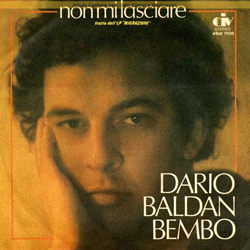
The richness of the piano from Dario Baldan Bembo’s “Non Mi Lasciare” (16-bit/44.1kHz -Qobuz) layered with the copious sub-bass and the magic of Dario’s operatic voice portrayed with extreme dynamics again in a gigantic soundstage with levels of musicality that would make you think it a 24-bit/192kHz recording.
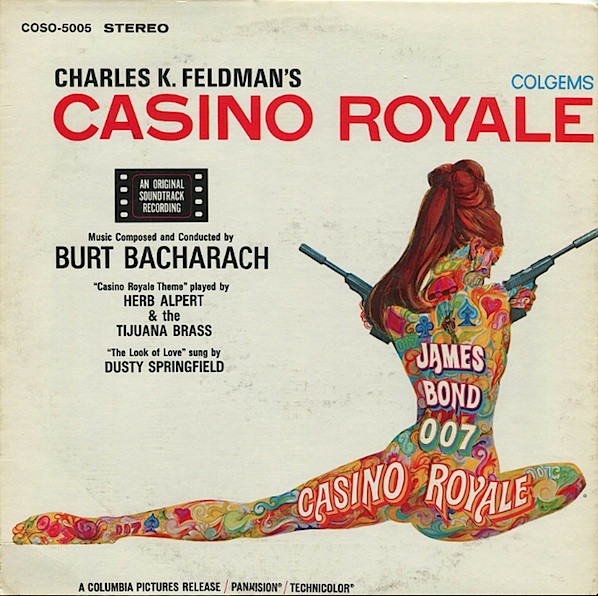
I moved on to loudspeakers, as that is a real test of soundstage and imaging. Opening with Herb Alpert’s Tijuana Brass performing “Casino Royale” (“Sounds Like” – 24-bit/44.1kHz -Qobuz), no small club sound here, the soundstage was huge and the dynamics were excellent, giving brass its due, eking out the subtle edge that is horns.
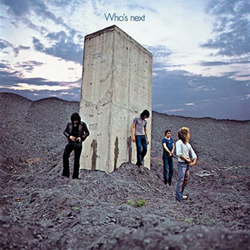
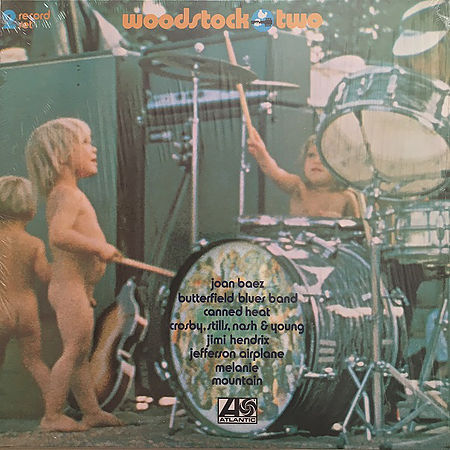
The Nicky Hopkins on piano, along with the rest of the band were set up far beyond the back of the speakers for “The Song Is Over” (“Who’s Next” – The Who – 24-bit/96kHz-Qobuz), but the true standout was his performance with Jefferson Airplane live at Woodstock (“Woodstock Sunday August 17, 1969 (Live)” – 16-bit/44.1kHz -Qobuz) for “Eskimo Blue Day” which sounded like I was sitting twenty feet from the stage in the mud with everyone else.
Just a final extra note: this article was originally slated to run on June 30th, but as fate would have it, the above-mentioned firmware update was launched on the 30th, so I delayed it a week so that I could install the update and talk about it. The update process was simple enough; I went to the Apple App Center and updated the Forkbeard App, at which point a small arrow appeared on the Gungnir 2 section of the App. I then ran the update several times until the arrow went away, at which point it was necessary to uninstall and redownload the App, and the Volume control and EQ showed up in the App window. The EQ can be accessed by touching the three plus signs icon (“+++”), and there is a pull-down menu with “Flat”, “Loudness”, and “EQ” selectable. For those not familiar with what “Loudness” is for, essentially, since Bass has a tactile component to it, as volume is lowered, Bass drops off at a greater rate than other frequencies, so Loudness is meant to compensate for this. Having your Loudness handled in the digital domain means you don’t have the phase distortion normally associated with analog EQs and Tone Controls. To operate the Parametric EQ, there are five dots on a frequency graph, and you can adjust by putting your finger on the dot and moving it around. Again, for those who don’t know what “Parametric” means, it means that you have full control of the frequency of each band as well as amplitude. The Volume control, of course, means that you can use the Gungnir 2 with a straight power amp rather than having to have an integrated preamp/preamplifier. All in all, a very cool update.
Conclusions on the Schiit Audio Gungnir 2 Balanced Multiform™ DAC
Simply put, it is my experience that the Schiit Audio Multi-Bit DACs are the best-performing PCM DACs out there, and the Schiit Audio Gungnir 2 Balanced Multiform™ DAC is the best-sounding of those I have auditioned. Accuracy aside (which I admit is the whole point of Multi-bit DACs), the musicality, extreme detail, and massive soundstage of the Gungnir2 are sincerely to die for. While I did experiment a bit with the NOS DAC, Mike Moffat’s signature digital filter, which has been close to forty years in development, is what the Schiit Audio Multi-Bit DAC is all about, and it makes no sense to not use it.
As one would expect from a state-of-the-art DAC, the Gungnir2 is genre agnostic, working well with any form of music; the timbre and tonal balance are correct, imaging is laser perfect, the soundstage is palpable and realistic, and streaming music seems to perform as well as local storage.
The reality of the situation is that I intend to use the Gungnir2 as my reference DAC for as long as I continue to have it in my possession, which will probably be until I am able to perform the Lyr3 review. I can easily recommend the Gungnir2 to anyone who is looking for an end-game DAC and isn’t burdened with a ton of DSD tracks. Two thumbs up.
Manufacturer’s Website: https://www.schiit.com/products/gungnir-2
Price: $1,599
SPECS THAT MATTER (quoted from Schiit Audio)
Distortion: inaudible; 100-1000x lower than any transducer (speaker or headphone) you’re using
Noise: inaudible; far below a typical speaker power amplifier
Input capability: accommodates all actual music recordings (upsampling for the heck of it, maybe not), 2 USBs!
Heat: runs moderately warm; this is normal and no need for panic
Size: suitable for typical stereo shelf or rack placement, not super desk-friendly
OTHER SPECS
Frequency Response: 20Hz-20KHz, +/-0.06dB
• THD+N: <0.0008%
• IMD: <0.0006%, CCIF
• S/N: > 112dB, referenced to full output
• Crosstalk: -128dB, 20-20kHz
Maximum Output: 2.0V RMS single-ended, 4.0V RMS balanced
Inputs: Coaxial SPDIF, Optical SPDIF, USB
Input Capability
Up to 32/384 for Unison 384
Up to 32/192 for other inputs
Input Receiver
SPDIF: AK4118
USB: Schiit Unison USB™
Outputs: RCA (single-ended) and XLR (balanced)
Output Impedance: 75 ohms for both
Conversion Type: Schiit Multiform™
D/A Conversion IC: Texas Instruments DAC8812C x 4
Digital Filter: proprietary Schiit time- and frequency-domain optimized digital filter implemented on Analog Devices SHARC DSP processor, running 8X oversampling
Analog Stage: Unique differential multiplying, based on AD4898
Power supply: two transformers, one each for analog and digital, 13 stages of regulation, including separate supplies for critical digital and analog sections
Upgradability: Autonomy 2™ architecture with externally replaceable DAC/Analog Card and replaceable input card, plus over the air updates via Forkbeard™
Remote control:
IR remote included, controls source selection, phase invert, and mute.
Forkbeard™ Bluetooth module optional, controls all above; provides real-time information on sources and outputs; integrates with a complete Forkbeard system for more advanced functionality
Power Consumption: 24W
Size: 16 x 8 x 2”
Weight: 12 lbs
Gungnir 2 is covered by a 5-year limited warranty that covers parts and labor. And if you don’t like your Gungnir 2, you can send it back for a refund, minus 5% restocking fee, within 15 days of receiving it.

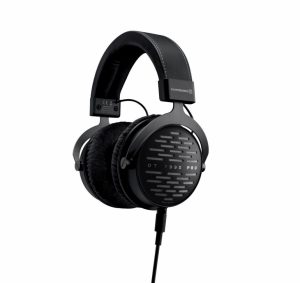
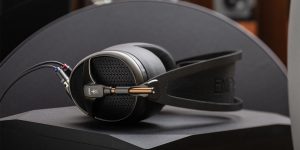
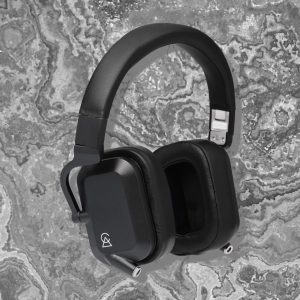
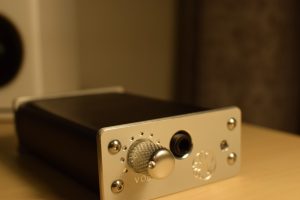
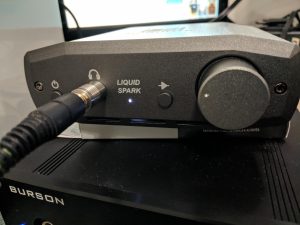
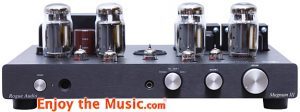
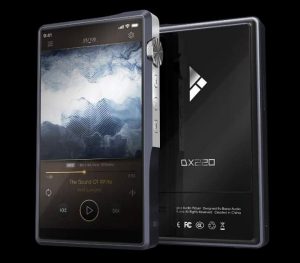
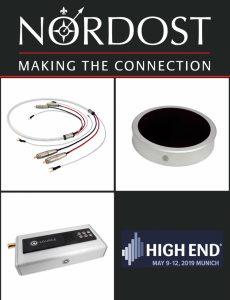
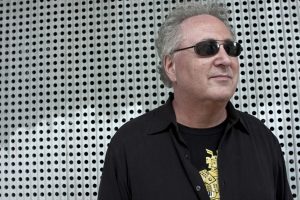


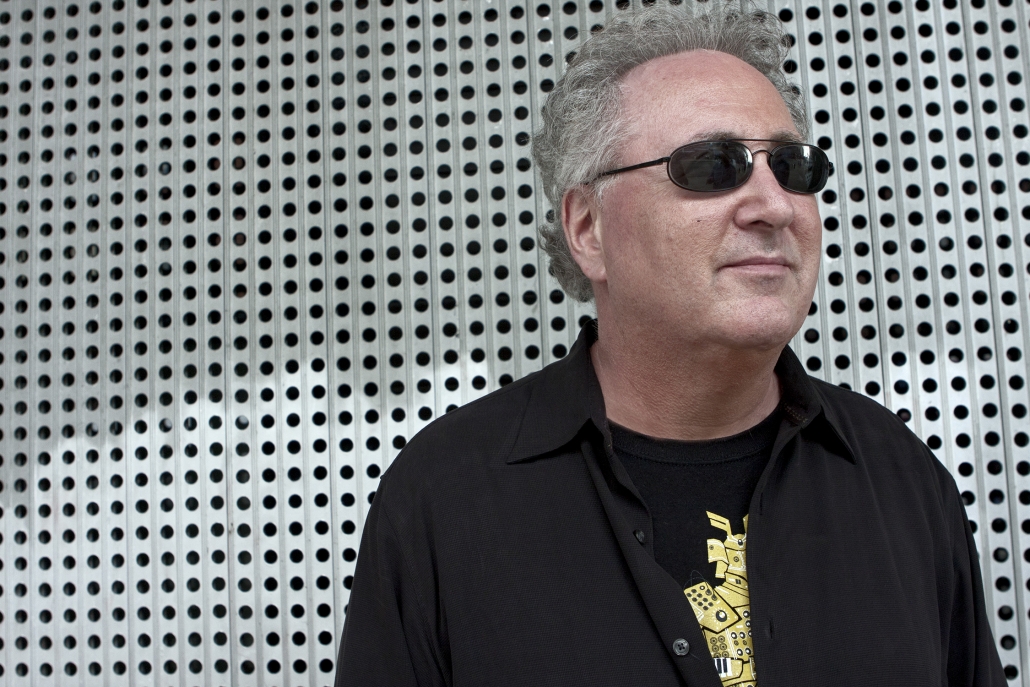

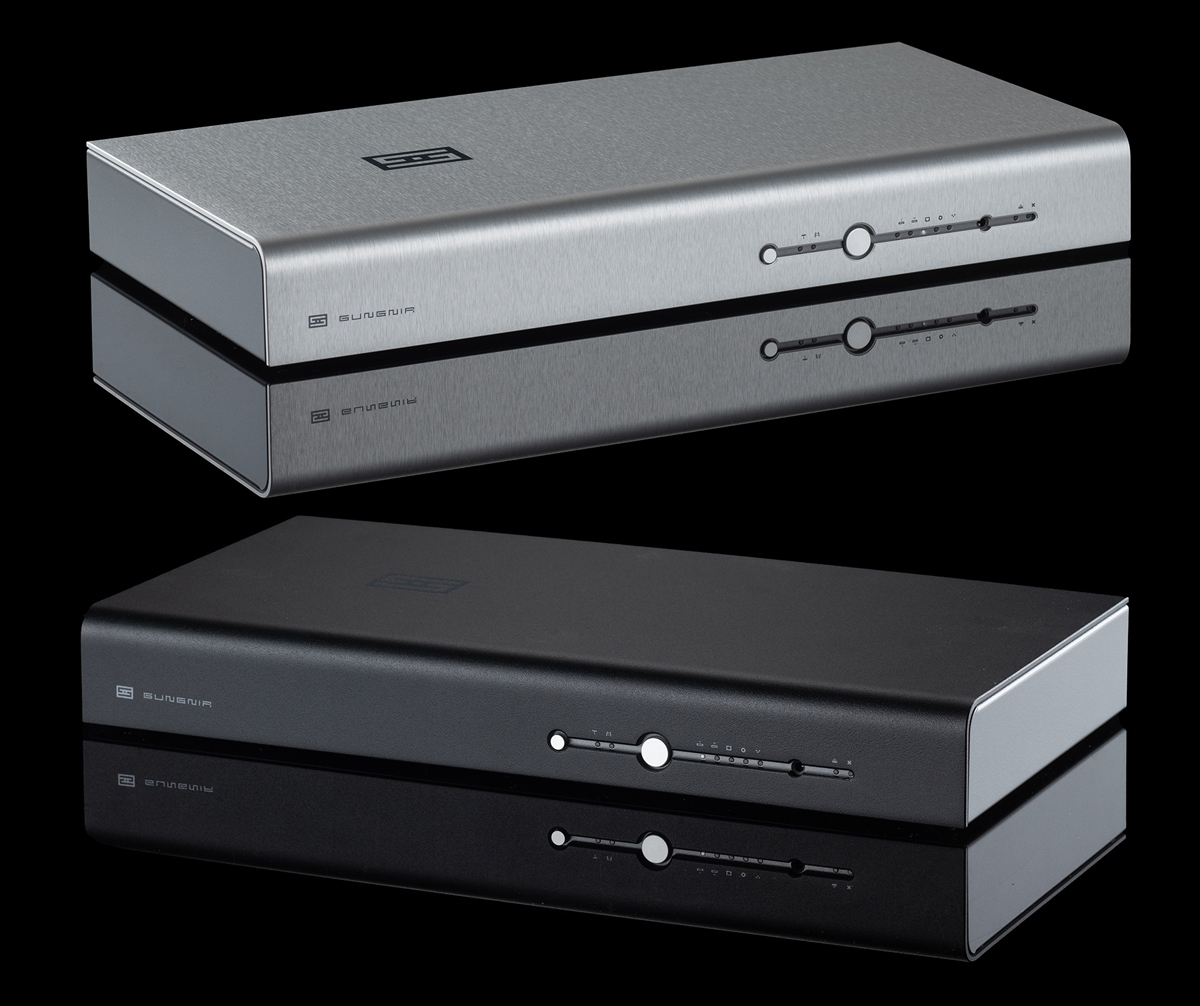
Want to join discussion?
Feel free to contribute!